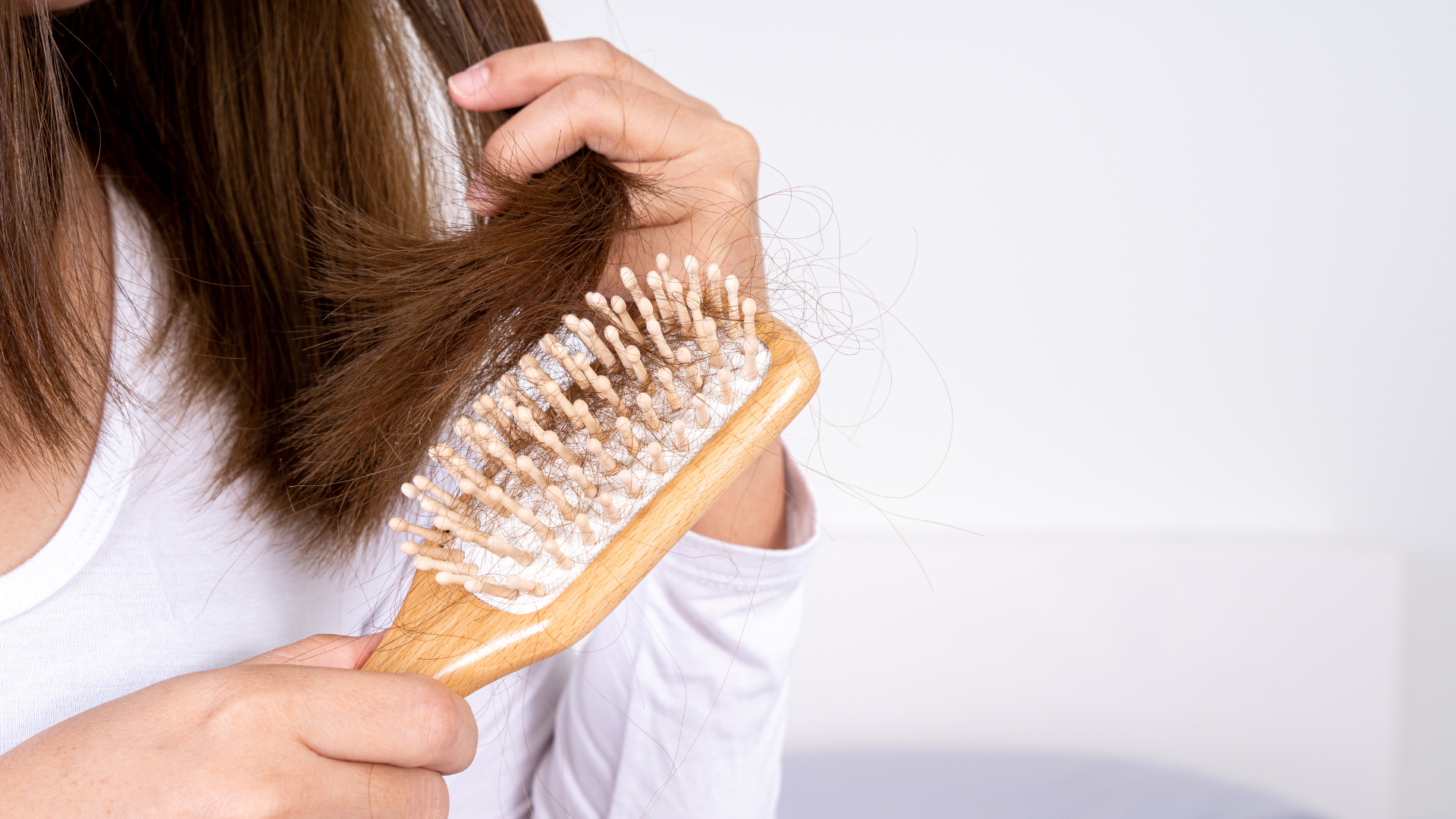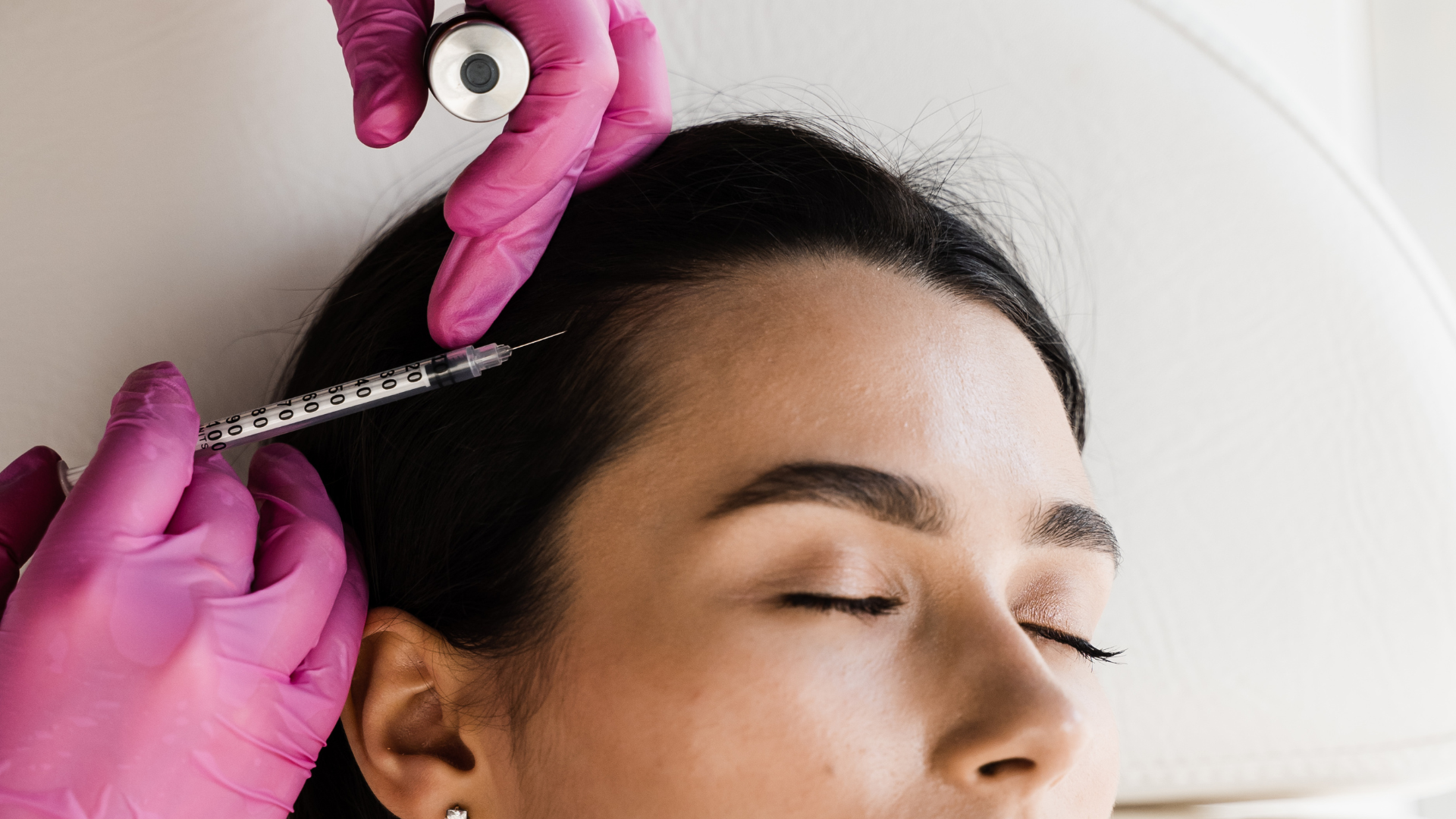What Are These Treatments?
Microneedling is a minimally invasive procedure using tiny needles to create small punctures in the scalp, stimulating natural healing and potentially promoting hair growth by improving blood flow and collagen production.
PRF (Platelet-Rich Fibrin) is a treatment using a concentrate from your own blood, rich in growth factors that may help repair and regenerate hair follicles, enhancing scalp health.
Exosome Therapy
involves tiny vesicles from stem cells, delivering growth factors directly to hair roots, which may encourage new hair growth and improve hair density.

How Do They Work Together?
Combining microneedling with PRF or exosomes can enhance effectiveness, as microneedling creates channels for better absorption, allowing these treatments to penetrate deeper and potentially stimulate hair follicles more effectively.
What to Expect
These treatments are non-surgical with minimal downtime, and you might notice reduced shedding within months, with fuller results after 6-12 months. However, individual results vary, and they’re best for mild to moderate hair thinning, not advanced baldness.
An Unexpected Detail
Unlike PRF, which requires a blood draw, exosome therapy doesn’t need one, potentially reducing infection risks and appealing to those wary of invasive procedures.

Detailed Analysis of Hair Restoration Using Microneedling with Exosomes or PRF
Background on Hair Loss and Treatment Options
Hair loss, particularly androgenetic alopecia (male and female pattern baldness), affects millions, impacting self-confidence and quality of life. Traditional treatments like minoxidil and finasteride are FDA-approved, but newer regenerative approaches, such as microneedling with exosomes or PRF, are gaining attention for their potential to stimulate hair regrowth Exosomes for hair growth and regeneration. This analysis focuses on how these combinations can be used for hair restoration, considering both scientific evidence and practical considerations.
Understanding Exosomes for Hair Restoration
Exosomes are small extracellular vesicles, typically 30–200 nm in diameter, released by cells to facilitate intercellular communication. They carry proteins, nucleic acids, lipids, and growth factors, making them promising for regenerative therapies
Exosomes for Treating Hair Loss: A Review of Clinical Studies. In hair restoration, exosomes, often derived from stem cells like mesenchymal stem cells (MSCs), are applied to the scalp to stimulate hair follicle regeneration by delivering growth factors and RNA to dermal papilla cells.

Understanding PRF for Hair Restoration
PRF, or Platelet-Rich Fibrin, is a second-generation platelet concentrate derived from the patient’s blood, containing a high concentration of platelets, growth factors, white blood cells, and stem cells. It’s prepared by spinning blood at a lower speed, allowing fibrin to form a matrix that slowly releases growth factors, potentially offering a more sustained effect compared to PRP. Studies suggest PRF may be effective for hair growth in androgenetic alopecia. PRF is autologous, minimizing immune reactions, but requires a blood draw, similar to PRP.
Understanding Microneedling for Hair Loss
Microneedling, also known as collagen induction therapy, involves using a device with fine needles to create controlled micro-injuries on the scalp. This process triggers the body’s natural wound-healing response, increasing collagen and elastin production, which are essential for hair follicle health. Studies, such as a randomized trial, show it can be effective for androgenetic alopecia, especially when combined with minoxidil, by enhancing blood circulation and nutrient delivery to follicles
Microneedling for Hair Loss - PubMed. It’s minimally invasive, with side effects like temporary redness, and is suitable for early-stage hair thinning.

Combining Microneedling with Exosomes: Mechanism and Rationale
The combination of microneedling and exosome therapy leverages the strengths of both. Microneedling creates microchannels in the scalp, enhancing the absorption of topical treatments, including exosomes and applying exosome serum post-microneedling, allowing deeper penetration to reach hair follicles, potentially amplifying regenerative signals.
Combining Microneedling with PRF: Mechanism and Rationale
Similarly, microneedling with PRF involves applying PRF to the scalp after creating microchannels, enhancing the delivery of growth factors to hair. The fibrin matrix in PRF may provide a sustained release of growth factors, potentially improving efficacy when combined with microneedling’s stimulation of the healing response. Clinical observations suggest this combination can improve hair density and thickness.

Efficacy and Clinical Observations
While individual studies on microneedling show promise, such as improved hair growth in androgenetic alopecia when combined with minoxidil, the addition of exosomes or PRF is newer. Reports suggest patients may notice reduced shedding within 1-2 months, with thicker hair growth by 3-6 months, and fuller results after 6-12 months. The evidence leans toward potential benefits, but more research is needed to confirm efficacy.
Benefits and Patient Suitability
The combined treatments are minimally invasive, requiring no surgery, and offer benefits like stimulating dormant follicles, improving hair density, and enhancing scalp health. They’re ideal for individuals with mild to moderate hair thinning, particularly androgenetic alopecia, and those seeking non-surgical options.

Procedure and Recovery
The procedure typically starts with scalp cleansing, followed by numbing cream application. Microneedling creates microchannels, then exosome serum or PRF is applied topically, sometimes with additional injections. Post-treatment, patients may experience sunburn-like sensations, treated with ice, and are advised to avoid washing hair for 24 hours.
Recovery is quick, with minimal downtime, making it convenient for busy individuals.
Potential Side Effects and Risks
Side effects are generally mild, including temporary redness, swelling, or tenderness, resolving within days.
Summary of Findings
In summary, combining microneedling with exosomes or PRF for hair restoration is a promising, minimally invasive approach that may enhance hair growth by improving scalp health and delivering growth factors.

Table: Comparison of Microneedling with Exosomes and PRF for Hair Restoration
| Aspect | Microneedling with Exosomes | Microneedling with PRF | Combined Approach Notes |
|---|---|---|---|
| Source | Stem cell-derived, no blood draw | Patient’s own blood, requires blood draw | Exosomes avoid blood draw, PRF is autologous |
| Mechanism | Delivers growth factors via microchannels | Sustained release of growth factors via fibrin | Enhances penetration and regeneration |
| Invasiveness | Minimally invasive, topical or injected | Minimally invasive, injected after microneedling | Quick recovery, no surgery |
| Side Effects | Temporary redness, swelling | Similar, plus potential for blood draw risks | Mild, resolves within days |
| Suitability | Early-stage thinning, androgenetic alopecia | Similar, may vary by patient response | Ideal for mild to moderate thinning |
| Evidence Level | Preliminary, limited clinical data | Moderate, more studies needed | Anecdotal, needs more research |













Contact
All Rights Reserved | ATX Infusion and Wellness

